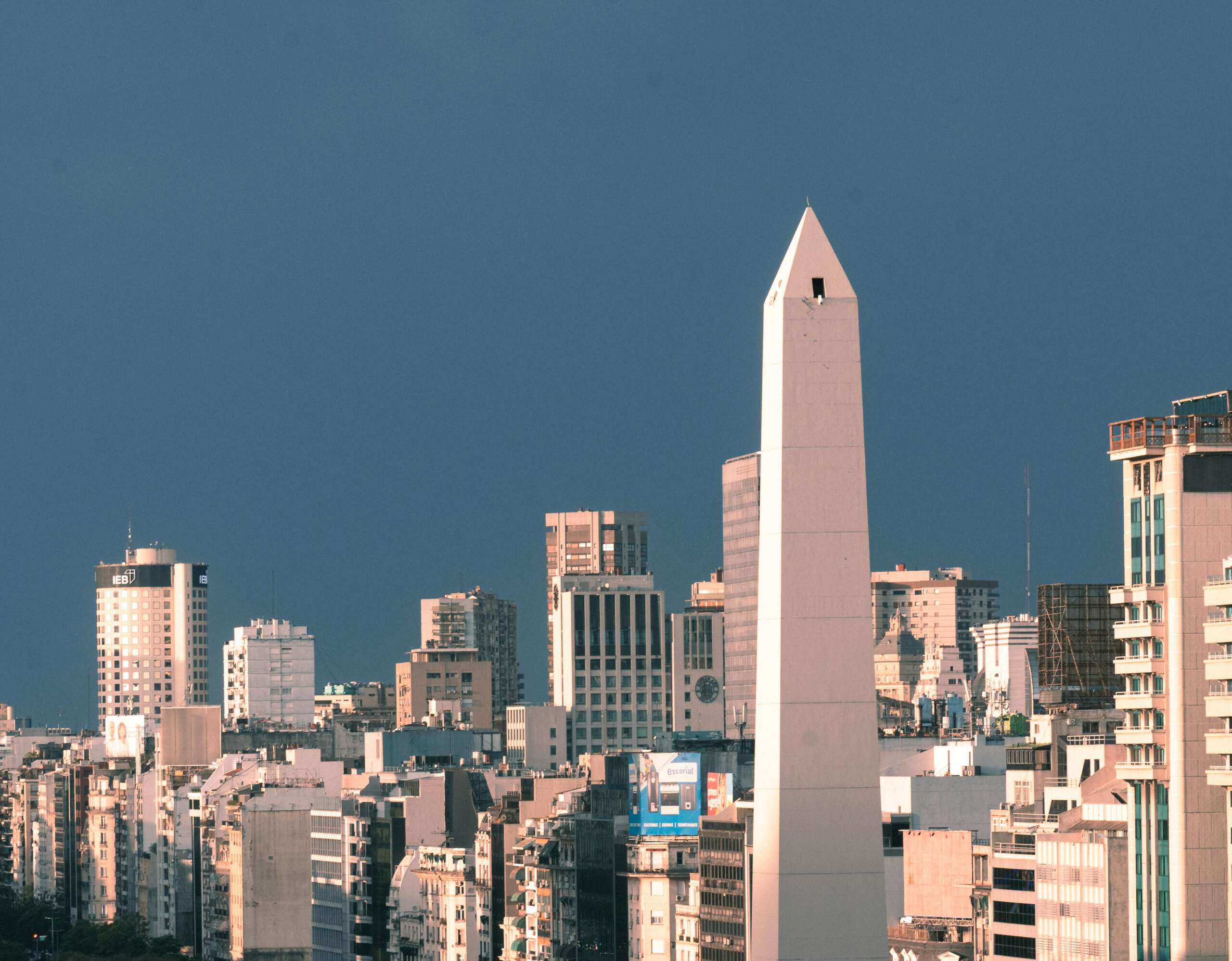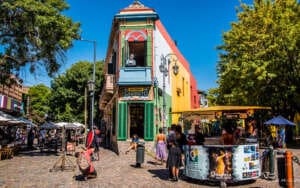Buenos Aires: A Vibrant Fusion of Tango, Culture, and European Charm
Buenos Aires, the capital of Argentina, is a unique city with a unique flavor. Known as the “Paris of South America,” this bustling metropolis reflects a unique blend of European sophistication and Latin passion. Its stunning streets echo with the rhythm of tango, its architecture reveals layers of history, and its nightlife pulses with the energy of a city that never sleeps. From its world-famous cuisine to its cultural richness, Buenos Aires offers fresh experiences to every visitor.
In this blog post, we’ll explore how Buenos Aires earned its reputation as a cultural melting pot. We’ll dive into its history, its iconic tango tradition, its architectural wonders, and its culinary and nightlife scenes.
1. Buenos Aires: A City Rich in History
From Colonial Outpost to Modern Metropolis
Buenos Aires was founded in 1536 by Spanish colonizers, but it wasn’t until 1580 that the city began to thrive as a trade hub. Its location on the Río de la Plata made it a gateway for commerce between Europe and South America. Over time, Buenos Aires grew into a cosmopolitan city, heavily influenced by waves of European immigration in the 19th and early 20th centuries.
By the late 1800s, Buenos Aires had become one of the wealthiest cities in the world, thanks to Argentina’s booming agriculture and livestock industries. This economic prosperity left a lasting imprint on the city’s architecture and culture.
The Immigrant Influence
During the late 19th century, millions of immigrants from Italy and Spain arrived in Buenos Aires, seeking better opportunities. These newcomers brought their traditions, cuisine, and customs, which blended with the city’s Spanish colonial heritage to create a unique cultural tapestry.
Today, this mix of influences is evident in everything from the city’s language (a distinctive Spanish dialect called Rioplatense) to its culinary traditions.
2. Tango: The Heartbeat of Buenos Aires
The Origins of Tango
Tango was born in Buenos Aires in the late 19th century, emerging from the working-class neighborhoods of La Boca and San Telmo. A fusion of African, European, and Creole influences, tango was initially seen as a dance of the marginalized people. Over time, however, it gained popularity and became a defining symbol of Argentine identity.
Where to Experience Tango in Buenos Aires
Buenos Aires offers countless ways to immerse yourself in the world of tango:
- Tango Shows: Professional performances at venues like El Querandí or Esquina Carlos Gardel showcase the elegance and drama of tango.
- Milongas: For a more authentic experience, visit a milonga (tango dance hall) like La Viruta or Confitería Ideal. Here, locals and visitors alike gather to dance late into the night.
- Tango Classes: Want to learn the steps yourself? Many studios and milongas offer beginner-friendly lessons.
- International Tango Festival: Held annually in Buenos Aires, this event attracts dancers and fans from around the world.
Tango’s Cultural Legacy
Tango isn’t just a dance; it’s a way of life. Its themes of longing, passion, and heartbreak are woven into the fabric of Buenos Aires, influencing its music, art, and even its literature.
3. Buenos Aires Architecture: A Walk Through History
European Elegance Meets Latin Flair
Buenos Aires is a city of contrasts, and nowhere is this more apparent than in its architecture. Stroll through its neighborhoods, and you’ll encounter everything from neoclassical mansions to sleek modern skyscrapers.
- Recoleta: Known for its Parisian-inspired mansions and wide boulevards, Recoleta exudes old-world elegance. The Recoleta Cemetery, where iconic figures like Eva Perón are buried, is a must-visit.
- San Telmo: This historic neighborhood features cobblestone streets and colonial-style buildings, alongside vibrant street art and antique markets.
- La Boca: Famous for its colorful houses and the Caminito street, La Boca reflects the city’s working-class roots and immigrant history.
- Puerto Madero: A symbol of modern Buenos Aires, this revitalized dock area is home to sleek skyscrapers, upscale restaurants, and the iconic Puente de la Mujer.
Notable Landmarks
- Teatro Colón: One of the world’s most renowned opera houses, this architectural gem combines Italian Renaissance, French Baroque, and Classical influences.
- Casa Rosada: The iconic pink presidential palace is a symbol of rich Argentine politics and history.
- Obelisco: A towering monument in the heart of the city, the Obelisco is a symbol of Buenos Aires’ resilience and pride.
4. Buenos Aires Food: A Culinary Journey
The Meat Lover’s Paradise
Argentina is synonymous with beef, and Buenos Aires offers some of the best steaks in the world. Traditional parrillas (steakhouses) serve up juicy cuts like bife de chorizo (sirloin) and asado (barbecued ribs). Don’t forget to pair your meal with a glass of Malbec wine from Argentina’s renowned vineyards.
Beyond Beef: Other Culinary Highlights
- Empanadas: These savory pastries, filled with meat, cheese, or vegetables, are a staple of Argentine cuisine.
- Milanesas: Breaded and fried meat cutlets, similar to schnitzel, are a popular comfort food.
- Choripán: A simple yet delicious sandwich made with chorizo sausage and chimichurri sauce.
- Dulce de Leche: This caramel-like spread is used in desserts like alfajores (shortbread cookies) and helado (ice cream).
Cafés and the Porteño Coffee Culture
Buenos Aires is famous for its café culture, inspired by European traditions. Locals, known as porteños, gather at historic cafés like Café Tortoni to sip coffee, read newspapers, and chat.
5. Buenos Aires Nightlife: A City That Never Sleeps
Buenos Aires comes alive after dark, offering something for every taste.
Nightlife Hotspots
- Palermo: Trendy bars and nightclubs make this neighborhood a favorite among the younger crowd.
- Recoleta: For a more sophisticated evening, head to Recoleta’s wine bars and upscale lounges.
- San Telmo: Live music venues and tango bars capture the city’s bohemian spirit.
The Timeline of a Night Out
In Buenos Aires, the nightlife starts late. Dinner typically begins around 9 or 10 PM, and clubs don’t get busy until 2 AM. If you’re planning a night out, prepare for a marathon of music, dancing, and revelry.
6. The European and Latin Blend: What Makes Buenos Aires Unique
Language and Dialect
The Spanish spoken in Buenos Aires has a distinctive Italian flair, reflecting the influence of Italian immigrants. The accent, known as Rioplatense Spanish, is characterized by its melodic intonation and unique vocabulary.
Festivals and Traditions
Buenos Aires hosts a variety of cultural festivals, celebrating everything from tango to film and literature. Highlights include:
- Buenos Aires International Tango Festival
- Feria del Libro (Book Fair)
- Carnaval Porteño (Carnival)
7. Exploring Beyond the City
While Buenos Aires offers plenty to see and do, its surrounding regions are equally captivating.
- Tigre Delta: A network of waterways just outside the city, perfect for boat tours and relaxing escapes.
- Estancias: Visit a traditional ranch to experience Argentina’s gaucho (cowboy) culture.
- Colonia del Sacramento: A quick ferry ride takes you to this charming town in Uruguay, known for its colonial architecture.
Key Takeaways
- Buenos Aires is a city where European elegance meets Latin passion, offering a rich cultural experience.
- Tango is the heartbeat of the city, influencing its music, dance, and way of life.
- The city’s architecture, food, and nightlife reflect its unique blend of history and modernity.
- Conservation of its cultural heritage and vibrant traditions makes Buenos Aires a city worth exploring.
Conclusion
Buenos Aires is more than a city, it’s an experience. From the haunting strains of tango to the lively bustle of its streets, it’s a place where history, culture, and passion converge. Whether you’re loving a perfectly grilled steak, wandering through a historic neighborhood, or dancing the night away, Buenos Aires promises memories that will last a lifetime.



